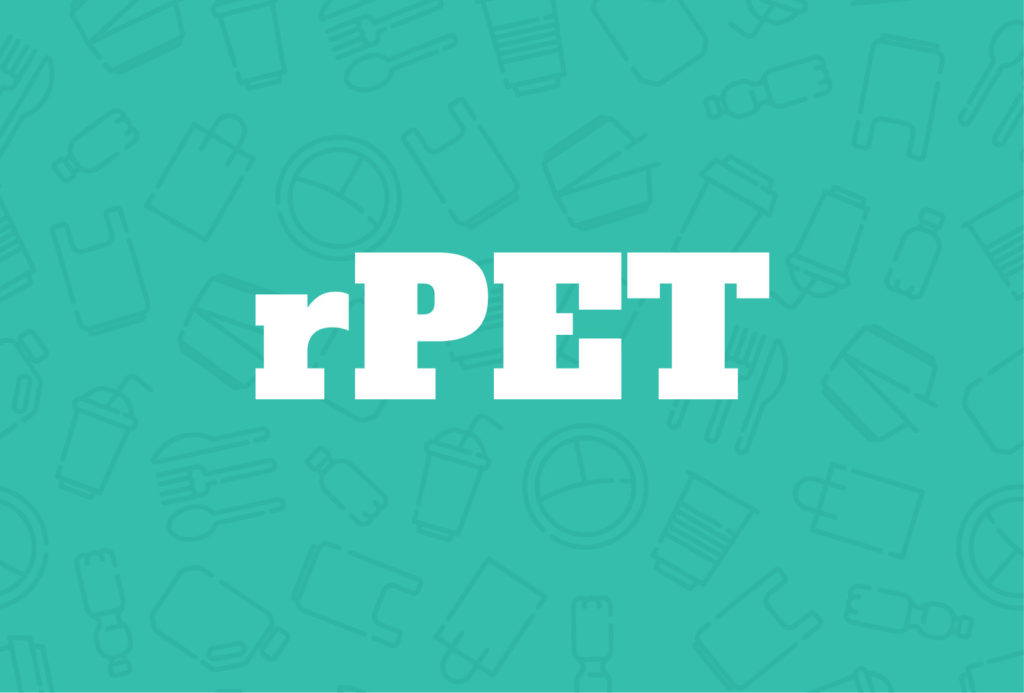It is estimated that more than 500 billion plastic bottles are manufactured worldwide every year.
It’s a huge quantity that obliges us to reflect on production, management, disposal, and especially on plastic material recycling.
PET – polyethylene terephthalate in the polymer family – is the most used type of plastic for the manufacturing of beverage & detergent bottles.
Through its recycling, it is possible to obtain a material called rPET (from recycled PET), which is currently used in several sectors to manufacture a big quantity of products.
Learn about the story, use, and advantages of recycled PET in our article!
PET recycling is essential for environmental sustainability
Light and resistant, PET was patented in 1941, when it was especially used to manufacture textiles. In the 1970s, packaging production was started, too. It rapidly achieved an outstanding success thanks to PET’s features such as lightness, versatility, transparency. It’s a success that – unfortunately – was transformed into a potential source of pollution by incivility and lack of respect for the environment.
Nowadays – luckily – we can stop this negative trend thanks to the efforts made by many consumers that dispose waste correctly, and the efforts made by many companies that decided to invest in recycled materials, without forgetting the increasingly well-performing recycling technologies.
PET is indeed considered a precious type of polymer, because it’s up to 100% recyclable, and it can be recycled more times. rPET is used in several sectors – not only to manufacture bottles and packaging, but also clothing from recycled polyester.
Even after having been recycled, PET preserves important features that turned it into one of the most used materials, such as great flexibility, waterproofness, high resistance to use and temperature. Without forgetting the fact that it can be further recycled, contributing to a significant reduction of virgin plastic packaging in the environment.
rPET – main advantages
- Lower environmental impact Indeed, PET recycling produces 75% less of CO2 emissions and requires less energy compared to virgin material production. Recycling 1k of PET corresponds to reducing CO2 emissions by 3kg. (source: The New Plastics Economy Global Commitment 2019 Progress Report).
- Less waste in landfills PET separate collection and consequent recycling contribute towards reducing plastic waste in landfills.
- Reduction of noxious emissions A smaller quantity of waste in landfills also means a significantly smaller quantity of emissions from incineration plants.
- Less oil extraction PET recycling doesn’t require new oil extraction for its production.
- A boost to circular economy Recovering such a common material and the chance to recycle it up to 100% also means boosting the circular economy – for the benefit of consumers and producing companies.
- More sustainable fashion A greater quantity of recycled materials contributes towards making the fashion industry – that is one of the most polluting ones in the world – more sustainable, thanks to a smaller quantity of oil used to manufacture new clothing.
How does PET recycling work?
Recycled PET is obtained through a mechanic process that takes place after post-consumer plastic waste is properly collected and selected. The rPET material so obtained is thus used to make packaging from recycled plastic in the food industry or yarn for clothing manufacturing.
There are already many companies that opted for recycled PET to manufacture high-quality items whilst protecting the environment – as we told you here.
Remember that, when it comes to the food industry, it is necessary to maintain high safety standards, according to the European legislation, which deals specifically with the use of recycled plastic in packaging in direct contact with food (CE 282/2008). That’s why it is essential that all materials come exclusively from certified recycling processes.
All this makes us understand that PET recycling is an important step for the environment and circular economy.
Essential actions such as using and disposing plastics correctly, their collection and consequent recycling can truly make a difference, turning them into valuable resources and contributing to the implementation of a virtuous recycling management.

